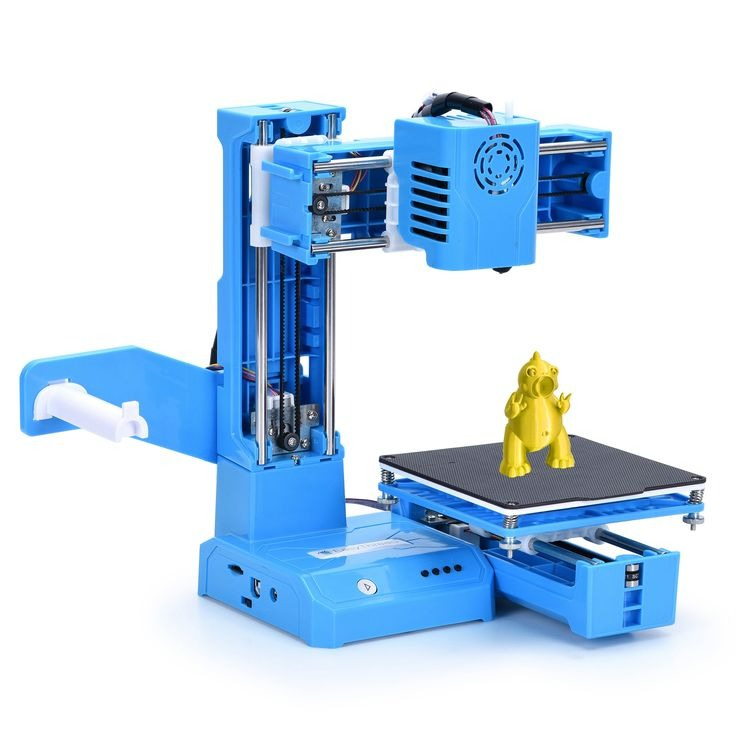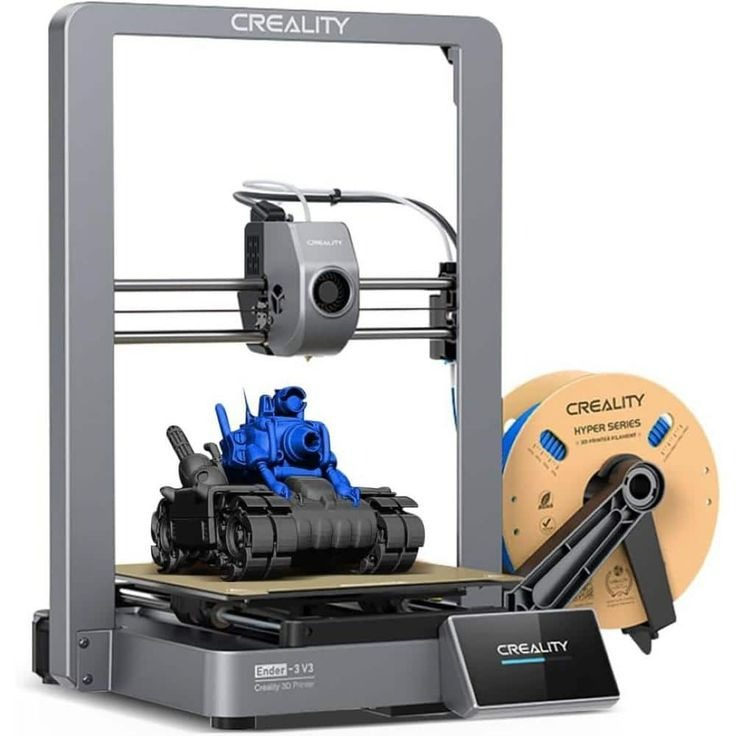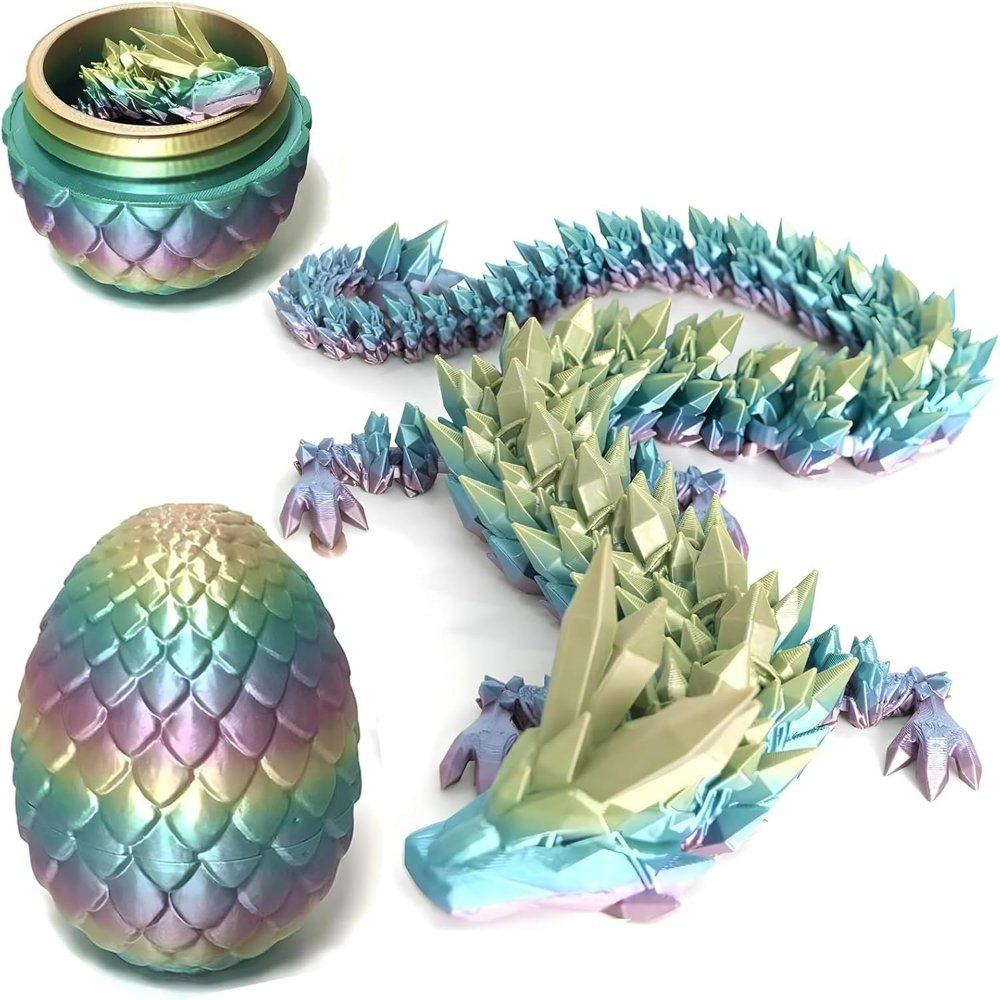Exploring the Capabilities of Large 3D Printers
The advent of large 3D printers has significantly expanded the realm of what’s possible in 3D printing. With their grand build volumes, these machines can construct objects that were previously unimaginable due to size constraints. Large 3D printers deliver not just in scale, but also in precision and material versatility. They can handle a variety of materials from plastics to metals, providing flexibility across different applications.
Industries are exploring how these large-scale printers can produce single-piece components. This eliminates the need for assembly of multiple small parts. In the aerospace sector, a large 3D printer can produce lightweight, yet strong, parts in a single print. In construction, these printers are building houses and infrastructure, layer-by-layer. And in automotive manufacturing, large-scale printing is being used to create customized, complex parts quickly and efficiently.
Customization is another strength of large 3D printers. They allow for adjustments in design with ease, making them ideal for industries that require bespoke solutions. Their capability to print complex geometries opens up new design possibilities. Moreover, large 3D printers can shorten lead times. They can rapidly produce large components that traditionally take much longer to manufacture.
In summary, the capabilities of large 3D printers are many. They offer large-scale production, material diversity, the potential for complex designs, customization, and efficiency in production times. As we recognize their power to revolutionize production processes, it is clear that large 3D printers will be a pivotal player in the future of manufacturing.

Essential Features to Look for in Large 3D Printers
When choosing a large 3D printer, knowing the essential features is crucial. The printer’s features can greatly affect the outcome of your prints. Here are some key features to consider:
- Build Volume: The size of the build platform determines the maximum size of the prints. Look for a printer with a spacious build volume to accommodate large projects.
- Print Speed: A faster print speed means quicker production times. However, the speed should not compromise the quality of the prints.
- Material Compatibility: The ability to print with various materials is important. Check for compatibility with different types of filaments like PLA, ABS, PETG, or metals.
- Layer Resolution: This affects the detail and smoothness of your prints. A printer with higher resolution can produce more intricate designs.
- Reliability: Consistent performance is key. Choose a reliable printer that maintains quality over long print jobs.
- User Interface: An intuitive interface makes it easier to operate the printer. A touchscreen display with clear navigation is a plus.
- Software Compatibility: The software should be user-friendly and compatible with popular 3D design programs.
- Customer Support: Good customer service is essential. Look for a manufacturer that offers support in case of technical issues.
Considering these features will help ensure that your large 3D printer meets your specific needs and is a sound investment for your projects.
Industries Revolutionized by Large-Scale 3D Printing
Large-scale 3D printing is making waves across various industries. Its impact is undeniable, from aerospace to healthcare. Here is a look at some sectors undergoing transformation thanks to large 3D printers.
- Aerospace: This industry benefits from printing lightweight and strong parts. Large 3D printers help create components for aircraft and spacecraft that are complex yet durable.
- Construction: In construction, these printers are building entire houses. They layer concrete to form walls and structures quickly and at a lower cost.
- Automotive: Car manufacturers use large 3D printers for prototypes and final parts. Customized dashboards and complex engine components are now possible.
- Healthcare: Custom prosthetics and medical models are being printed to fit patients perfectly. This allows for better patient care and treatment planning.
- Fashion & Art: Designers and artists are using large 3D printers to create unique pieces. These range from wearable garments to intricate sculptures.
- Manufacturing: Custom tooling and equipment parts are produced swiftly. This cuts down on inventory and streamlines production processes.
Each of these industries illustrates the vast potential of large 3D printing. Its ability to produce large, complex parts quickly is a game-changer. As technology progresses, more sectors will likely reap its benefits.

Overcoming Challenges in Large 3D Printing Projects
While large 3D printers offer unprecedented capabilities, they also present unique challenges. Handling these effectively is crucial for successful print outcomes. Here are some common hurdles and how to overcome them:
- Print Failure: Large prints take time and consume resources. Minimize failures by validating designs pre-print and ensuring your printer is well-calibrated.
- Material Usage: Large projects use more material, which can be costly. Opt for materials that balance cost with performance and consider recycling or reusing excess.
- Machine Maintenance: Bigger printers require more upkeep. Establish a maintenance routine to keep your printer in top condition.
- Temperature Control: Maintaining stable temperatures is vital for large prints. Use enclosures to mitigate fluctuations and improve adhesion.
- Post-Processing: Cleaning and finishing large prints can be labor-intensive. Plan for these steps and use tools that make the job easier.
- Software Issues: Large files can strain software. Use reliable programs and ensure your computer is powerful enough to handle them.
Navigating these challenges will help you harness the power of large 3D printing technology and achieve impressive results.
Key Considerations for Operating Large 3D Printers
Operating a large 3D printer involves planning and expertise to ensure optimal use and efficiency. Here are key considerations to keep in mind:
- Pre-Print Preparation: Adequate preparation is vital. Check your design files and printer calibration before you start a new job.
- Workflow Management: Streamline your print jobs. Organize tasks for smooth operation and reduced downtime between prints.
- Operator Training: Invest in training. Operators should be skilled in machine operation and troubleshooting.
- Environment Control: Keep printing conditions consistent. Maintain humidity and temperature for the best print quality.
- Safety Precautions: Practice safety. Be aware of high temperatures and moving parts. Use protective gear when necessary.
- Print Monitoring: Watch your print. Check the print’s progress regularly to catch any issues early on.
- Regular Cleaning: Keep your printer clean. Remove waste material and dust to prevent build-up and ensure longevity.
By keeping these key points in mind, you can run your large 3D printer effectively for high-quality, reliable results.

Case Studies: Successful Large 3D Printing Applications
Highlighting real-world examples is key when discussing the impact of large 3D printing technology. Here are several case studies that showcase successful applications of large-scale 3D printers across different industries.
- Aerospace Components: A notable aerospace company was able to produce a complex jet engine part. They used a large 3D printer to create the component in one piece, which resulted in reduced weight and improved performance.
- Construction of a House: A construction firm utilized a large 3D printer to build a house in just 24 hours. The printer laid down layers of concrete, cutting costs and speeding up the build process considerably.
- Automotive Prototyping: An automotive manufacturer created full-scale prototype parts for a new vehicle model. The large 3D printer allowed for rapid design changes and testing, speeding up the development cycle.
- Custom Prosthetics: In healthcare, custom prosthetics were printed for a patient, achieving a perfect fit. This not only improved comfort but also enhanced mobility for the patient.
- Art Installation: An artist designed and printed a large, complex sculpture. The large 3D printer handled the intricate details and large size, which would have been impossible with traditional methods.
Through these examples, it becomes clear that large 3D printers are powerful tools capable of expanding what is possible in manufacturing and design. Their ability to handle large-scale projects efficiently opens up new opportunities for innovation in various fields.
The Future of Large-Scale 3D Printing Technology
The potential for large-scale 3D printing grows every day. Here’s what we can expect in the near future:
- Advancements in Speed and Efficiency: Upcoming models of large 3D printers will likely print even faster. This will reduce production times significantly. Already, these printers are streamlining workflows. Soon, they may cut them down to mere hours for massive projects.
- Diverse Material Options: Researchers are developing new filaments. We’ll see printers that handle a broader range of materials. Think beyond plastics and metals to composites and bio-materials. This will enable a wider array of applications.
- Improved Precision: As technology advances, the precision of large 3D printers will follow. Expect tighter tolerances and detail that rivals traditional manufacturing. This precision will push the boundaries of customization and complex designs.
- Sustainability Focus: The environmental impact of 3D printing is a hot topic. Future printers might focus on sustainability. We could see increased use of recycled materials and energy-efficient processes.
- Accessibility and Cost: Costs are likely to fall as the technology becomes more widespread. This will make large 3D printers more accessible. Small businesses and educational institutions may invest in this technology.
- Integration with AI and IoT: Artificial intelligence and the Internet of Things could further optimize printer operations. Imagine printers that predict maintenance needs or adapt to design changes on the fly.
These advancements are just the beginning. Large 3D printers will continue to evolve, reshaping how we think about manufacturing, design, and creativity.
Navigating the market for the right large 3D printer involves careful consideration. To make an informed decision, focus on these factors:
- Identify Your Needs: Assess the size of the projects you plan to undertake. Pick a printer that matches your production scale.
- Consider Your Space: Large 3D printers need ample room. Ensure you have enough space for operation and maintenance.
- Look at Print Quality: Examine sample prints for quality. A printer that produces smooth and detailed objects is key.
- Check Material Costs: Research the cost of materials for your prints. Find a balance between quality and expense.
- Evaluate Operating Costs: Factor in electricity usage and maintenance expenses. Opt for energy-efficient models to save costs.
- Read Reviews: Look for feedback from other users. Reviews can provide insight into a printer’s performance and reliability.
- Ask for Demos: Request a demo from the vendor. Seeing the printer in action can help you gauge its fit for your needs.
- Compare Warranties: Examine the warranty coverage. A solid warranty offers protection and peace of mind.
- Assess Tech Support: Make sure support is available when you need it. Reliable technical support is crucial for troubleshooting.
- Investigate Upgrade Options: Check if upgrades are possible. A printer that can grow with your needs is a wise choice.
By taking these steps, you select a large 3D printer that can deliver on your expectations. It will become an asset to your projects, giving you the advantage of large-scale production with quality and precision. Remember to incorporate the keyword ‘large 3d printer’ appropriately to align with SEO best practices.